Chengdu is a Chinese city that merges perfectly with history and modernism, making it a vibrant capital of Sichuan Province. It is well-known as the land of Pandas and spicy delicacies, hence, Chengdu is a highlight for traveling enthusiasts keen on indulging themselves in new experiences. This guide will present a curated list of the fifteen things that you ought to do to observe the diverse culture, beautiful natural landscape, and lively city life. Chengdu has it all from visiting the Chengdu Research Base of Giant Panda Breeding to relishing Sichuan Hotpot. With this blog post, discover how to make the most out of your trip to Chengdu for the year 2025. From stunning landscapes, and delightful cuisines, to rich history, Chengdu is bound to take your breath away.
What are the must-visit attractions in Chengdu?
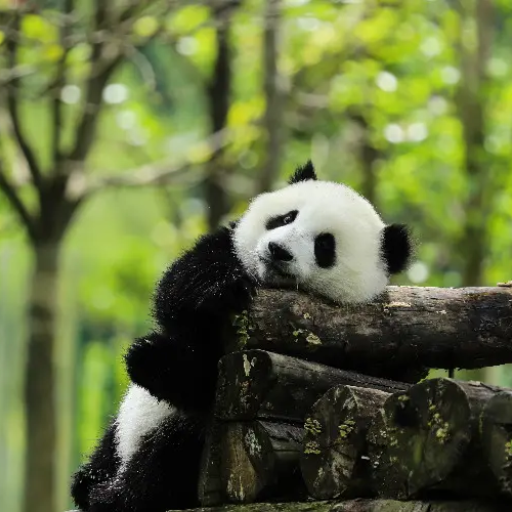
What are the must-visit attractions in Chengdu
- Chengdu Research Base of Giant Panda Breeding – A unique and well-established center devoted to the preservation of giant pandas, and offers an opportunity for people to observe them in a real-life environment that is close to their habitat.
- Jinli Ancient Street – A lively street full of deep history accompanied by local delicacies and traditional buildings, and a great place to buy souvenirs. Perfect for sandwiching into a tourist’s itinerary, as it draws on much of Chengdu’s rich history.
- Wuhou Shrine – This historical site was built regarding Zhuge Liang and the famous heroes of the Three Kingdoms Era. Like other traditional Chengdu temples, it is located in the middle of beautiful gardens and pampered by complex ethnic carvings.
- Kuan and Zhai Alleys – These alleys are also referred to as Wide and Narrow Alleys and are very famous in Chengdu for local culture. Senior citizens as well as young people can be seen on these streets due to their unique blend of traditional cafes, modern boutiques, and stores.
- Mount Qingcheng and Dujiangyan Irrigation System – Chengdu has a unique harmonious relationship with nature and innovation, which this UNESCO World Heritage Site stunningly reflects. It features an ancient yet functional irrigation system alongside a mount like Taoist that is a stunning example of a Taoist mountain.
- Chengdu Eastern Suburb Memory – As the name implies, this place is a masterpiece of Chengdu’s modern art combined with a sculpture and performance work showing off the unforgettable industrial heritage of Chengdu.
All these places demonstrate what makes Chengdu an unforgettable place in the eyes of tourists from different corners of the world.
Is the Chengdu Research Base of Giant Panda Breeding worth visiting?
Without a doubt, the Chengdu Research Base of Giant Panda Breeding is certainly worth visiting. This is one of the most well-known conservation centers in the world, and people can watch pandas roam free while learning what is being done to save their species. The base contains over 150 giant pandas, of which many people even get to see babies in the nursery. Educational programs and entertaining exhibits further improve the understanding of the pandas’ behavior and the accompanying conservation activities. Its verdant lands, which resemble parks, also help visitors of all ages remember the panda base as a peaceful place.
What is the best way to visit the historic Wuhou Temple?
About the ancient Wuhou Temple, my explorational visit would begin by wandering through its tranquil courtyards and appreciating the exquisite craftsmanship it possessed throughout the centuries. Meditating within the shrines of the temple’s illustrious relics, like the statues of Zhuge Liang and Liu Bei who are prominent figures from the Three Kingdoms period, would be something I wouldn’t miss. I would truly enjoy the beautiful gardens encircling the temple; Simply walking about and studying the inscriptions would be refreshing. In further enhancing my visit, I would prefer taking a guidable accent or audio headset to help me comprehend the value of the site as well as the narratives behind it.
What makes Jinli Ancient Street a popular tourist spot?
What draws tourists to Jinli Ancient Street is its perfect combination of history, culture, and entertainment. The street is famous for its Quing Dynasty style of architecture that allows visitors to fully experience traditional Chinese culture. The vibrant alleyways are full of stores that sell authentic Sichuan snacks, local delicacies, and even handmade crafts which makes it a paradise for food enthusiasts. There are also live performances of shadow puppetry and Sichuan opera which adds an exotic touch to the experience. Due to its stunning decor, Jinli Ancient Street proves to be a perfect place for tourists of all ages to go for an atmospheric walk.
Where can I experience authentic Sichuan cuisine in Chengdu?
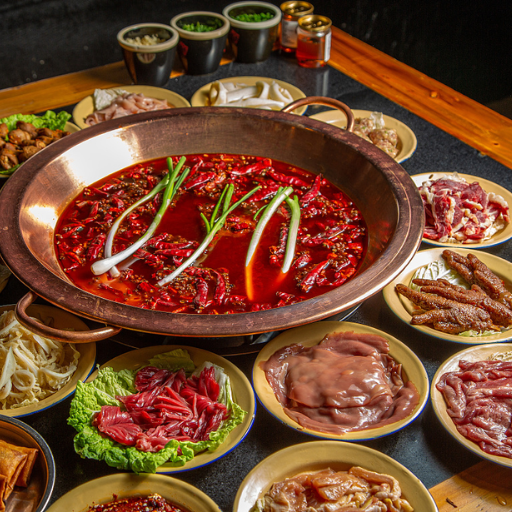
Where can I experience authentic Sichuan cuisine in Chengdu
Chengdu is famous for its rich options in the food sector, with unlimited chances to experience authentic Sichuan cuisine. You may first try the traditional hotpot restaurants like Shu Jiuxiang and Haidilao, which serve dishes that are famous and rich in spices like Sichuan. If you desire a more informal setting, you can eat local foods such as Mapo tofu, Dan Dan noodles, and Sichuan dumplings at small shops and food stalls at Jinli Ancient Street and Kuanzhai Alley. Chengdu is also famous for open markets like Kuanxiangzi and Chunxi Road, where you will find street food vendors who capture the heart of Chengdu and all its true flavors.
What are the best hot pot restaurants in Chengdu?
Based on my knowledge and experience, some of the best hot pot restaurants in Chengdu incorporate a modern and traditional fusion of this iconic dish. Haidilao is a top choice for exceptional service as well as a local and visitor favorite for customizable broth and fresh ingredient options. Another standout is Shu Jiuxiang which is famous for its preserved Sichuan-style hot pot soup which is rich bold and flattering with a multitude of dipping sauces. More upscale Tan Yu serves specialty hotpots of their fame accompanied by a variety of cementing dishes in a refined atmosphere that the clients savor. Tan Yu offers fine dining that elevates their popular Hot Pot experience. Each offered these places captures a unique aspect of the hot pot and Chengdu’s culinary scene.
How can I join a Sichuan cooking class?
Taking a culinary class in Sichuan is straightforward and is an engaging method of getting acquainted with the local food. I went to many sites looking for classes that were well-rated and did further investigation on the instructors’ credentials. Besides local schools in Chengdu, many classes can be found on Airbnb Experiences, so students can learn how to cook well-known dishes, including map tofu, kung pao chicken, and other variations. All I had to do was register for a class online, and most of them supplied the ingredients, and teaching materials, and even took participants to the market to buy genuine Sichuan spices. The class was an enjoyable way to learn and helped me value Sichuan’s mouthwatering food even more.
Where can I get the renowned Chengdu street food?
Vendors at Jinli Ancient Street and Kuanzhai Alley sell the renowned street food of Chengdu, which includes Zhong dumplings, spicy rabbit heads, egg-rolled cakes, and many other snacks. If you want a more local vibe, you can visit the night markets such as Shuangliu Night Market, where the atmosphere is more traditional, and the wide selection of food includes grilled meat on skewers, cold noodles, or even pancakes served Sichuan style. The food in these places is easily accessible and is what makes the Chengdu street food well known.
What cultural experiences should I not miss in Chengdu?
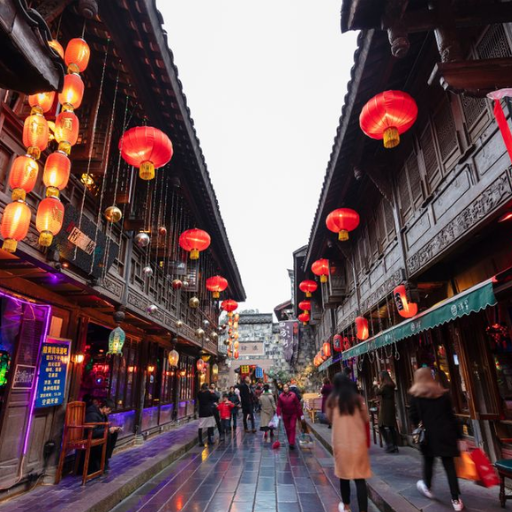
What cultural experiences should I not miss in Chengdu
You should immerse yourself in Chengdu’s traditional tea culture, with Wenshu Monastery and People’s Park serving as ideal spots for relaxing tea consumption alongside observing tai chi and mahjong. Also, the Sichuan Opera is a must-see, especially regarding face-changing (Bian Lian) performed at Shu Feng Ya Yun and other famous places. It is also worth a visit to The Chengdu Research Base of Giant Panda Breeding to appreciate the national treasure of China in its natural habitat.
How do I enjoy a performance of a Sichuan Opera?
To enjoy a Sichuan Opera performance, I should start with venues such as Jinjiang Theater or Shu Feng Ya Yun which are popular and reputed for their genuine performances. Good seats should be booked through reliable travel agencies or online before the show. Coming to the theater before the time slot guarantees an individual opportunity to enjoy different cultural exhibits at these theaters. During the show, I will see multiple performances of the amazing arts of face-changing, along with fire-spitting and funny skits typical of the glorious Sichuan culture.
What can I expect when visiting the Jinsha Site Museum?
Other than capturing the ancient Shu civilization, a visit to the Jinsha Site Museum includes viewing its eye-catching collection of artifacts, such as gold and jade, alongside the bronze relics discovered at the site. One of the striking pieces is *The Gold Sun Bird*. The exhibition consists of both the indoor halls of the museum and outdoor excavation areas where visitors can appreciate the cultural and archaeological importance of the site. The history of the place is made interactive through displays and multimedia presentations that showcase the daily lives, art, and rituals of the Shu people. In addition, the beautiful gardens around the site add another soothing experience to the journey. As a whole, the site serves as an informative and enriching destination for anyone interested in history, from scholars to leisure tourists.
Is the People’s Park a good place to observe local life?
Yes, the park allows users to observe local life in a new and lively way. From the energetic groups of dancers and tai chi practitioners to the locals sipping tea in the quaint teahouses, the park reflects social life over a day. In addition to that, the park seems to be a good deal more appealing compared to interacting with residents which allows tourists to delve deeper into Cub culture.
Which day trips are popular in Chengdu?
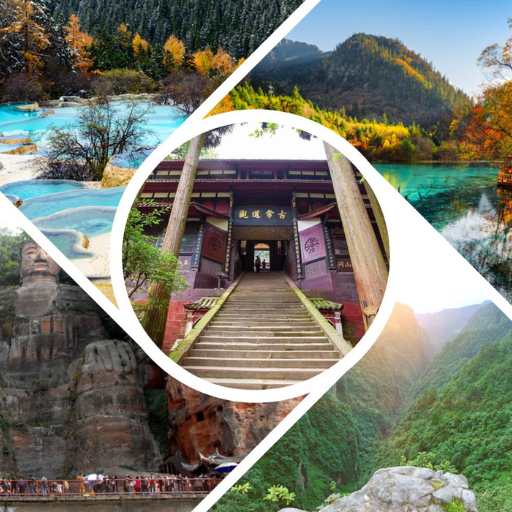
Which day trips are popular in Chengdu
Offering a myriad of options to suit any interests, day trips from Chengdu do not disappoint. One of the more sought-after options includes the Leshan Giant Buddha, a UNESCO World Heritage Site that continues to capture the attention of travelers due to its jaw-dropping scale combined with fine details. Mount Qingcheng is another local favorite and is much more tranquil, known for its picturesque Taoist landscapes. The Dujiangyan Irrigation System is also a favorite among locals due to its peculiar mix of history as well as engineering which offers a more cultural and historical form of exploration. All these locations are easily accessible within a few convenient hours and offer unforgettable experiences.
How do I go about planning a visit to the Leshan Giant Buddha?
Planning a visit for the Leshan Giant Buddha requires scheduling my trip during spring or autumn, preferably when the weather is a bit milder. Booking tickets for the visit in advance helps avoid long queues. To make the most of my visit, I attempt to arrive early in the morning so I can first enjoy the peaceful view of the Buddha before the crowds arrive. In terms of transportation, I have the option of taking a high-speed train or bus from Chengdu to Leshan City, and then from there, it is a short taxi or local bus ride to the site. The impressive view of the Buddha from the river is easily accessible while exploring the viewing platform on the boat. Lastly, I have to ensure I wear comfortable shoes and bring some water, as a bit of walking and stair climbing will be required to fully experience the giant statue.
What makes the Dujiangyan Irrigation System unique?
The Dujiangyan Irrigation System’s reason for the distinction is due to its heritage as the world’s oldest, functioning irrigation system which dates back to 256 BC and relies on no dam for its functionality. What particularly strikes me is the Fish Mouth Levee along with the Flying Sand Weir that seamlessly utilizes modern engineering techniques to control the flow of the Min River while also tactfully ensuring the prevention of floods as well as providing irrigation for an extensive area. This blend of utility and beauty greatly served the ancient Chinese and even continues to serve millions today, in the current day. It’s truly one of the wonders of ancient Chinese civilizations, standing testimony to their engineering mastery.
Is Mount Qingcheng worth a day trip for Taoist culture?
Mount Qingcheng is surely worth the investment of a day trip, especially for those who are inclined towards Taoist culture. Marked as one of the places where Taoism first began to flourish, the mountain features many ancient temples and sites that showcase the rich heritage of the philosophy. Some of the many highlights include the Jianfu Palace and Shangqing Palace which sit on the mountain amid plentiful greenery and quiet landscapes, further demonstrating Taoism and its core of harmony with existence. The immersion doesn’t stop, for the mountain also possesses walking trails with relics of culture and spirituality along with incredible vistas that all depict the history and belief of Taoism. Mount Qingcheng encapsulates a deeply profound experience for its admirers with the harmony of nature and rich, Taoist history behind it.
When is the best time to visit Chengdu?
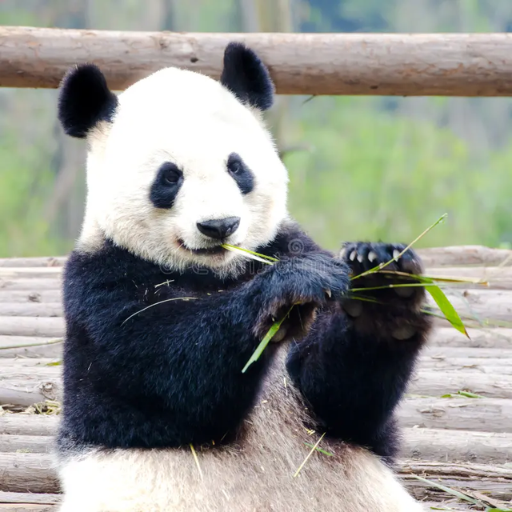
When is the best time to visit Chengdu
The prime time to visit Chengdu is during spring (March to May) and autumn (September to November). The weather during these times is mild and pleasant which is suitable for traversing the city and its attractions as well as indulging in outdoor activities and Sichuan delicacies. These seasons also have splendid natural scenery with blooming flowers for spring and colorful foliage for autumn, making travel more enjoyable.
What activities are available in Chengdu during different seasons?
During spring, I particularly enjoy People’s Park and Wangjianglou Park for their flowers and calming ambiance. It’s also an ideal time for trekking to scenic locations such as Mount Qingcheng. Summer in Chengdu can be very hot, so it’s best to take a trip to the mountains around Chengdu or visit the cool ancient town of Huanglongxi. I also partake in appreciating the amazing autumn foliage at Du Fu Thatched Cottage and walking along Jinli Street when the weather is chilly and the skies are clear. Indulging in hotpot from Chengdu panda research bases is what winter is all about, especially with cooler weather allowing the pandas to be lively and fun to watch.
How does the weather affect travel plans in Chengdu?
Weather is a deciding factor when it comes to traveling in Chengdu, as every season has its own unique set of experiences the climate relates to. For instance, the city experiences mild humid winters with average temperatures approximately ranging from 5 degrees Celsius to 10 degrees Celsius (41 degrees Fahrenheit to 50 degrees Fahrenheit), along with hot rainy summers where the temperatures can rise to 27 to 33 degrees Celsius (81 to 91 degrees Fahrenheit). Travel is best enjoyed during spring and autumn as the weather is moderate, with the temperatures falling between 15 degrees Celsius to 25 degrees Celsius (59 degrees Fahrenheit to 77 degrees Fahrenheit). Summer has an unpredictable amount of rainfall which makes outdoor activities difficult, so travelers might need to prepare with weather-specific apparel or activities that can be done indoors. Winter is great for enjoying hotpots alongside the giant pandas, especially cooler weather since means higher levels of activity for the pandas. Knowing these patterns means visitors can prepare accordingly to make the most out of their experience.
References
Frequently Asked Questions (FAQ)
Q: What are the best things to do in Chengdu for panda lovers?
A: The Chengdu Panda Base is undoubtedly one of the top attractions in China for panda enthusiasts. Located just 10 km from the city center, this research and breeding facility offers visitors a chance to observe giant pandas in a natural habitat. You can watch them eat bamboo, play, and even see baby pandas in the nursery. It’s best to visit early in the morning when the pandas are most active.
Q: How can I explore Chengdu’s rich history and culture?
A: To immerse yourself in Chengdu’s cultural tapestry, visit the Chengdu Museum, which showcases the history of the Shu civilization. Explore Kuanzhai Alley, one of the oldest shopping streets dating back to the Qing Dynasty, where you can experience traditional architecture and modern boutiques. Don’t miss Wuhou Temple, dedicated to the Shu kingdom’s strategist Zhuge Liang, to learn about the Three Kingdoms period.
Q: What are some fun things to do in Chengdu at night?
A: Chengdu comes alive at night with various activities. Visit Tianfu Square to see the illuminated skyscrapers and musical fountain show. Enjoy a traditional Sichuan opera performance at the Shufeng Yayun Teahouse. For food lovers, indulge in a spicy Chengdu hotpot dinner or explore the vibrant Jinli Street for street food and souvenir shopping.
Q: What are the must-try Chengdu food experiences?
A: As a UNESCO City of Gastronomy, Chengdu offers incredible culinary experiences. Try the famous Chengdu hotpot, characterized by its spicy and numbing flavors. Sample street food at Jinli Street or the Wide and Narrow Alleys. Don’t miss local specialties like map tofu, kung pao chicken, and dan noodles. For a unique experience, take a Sichuan cooking class to learn how to prepare these dishes yourself.
Q: What are some popular day trips around Chengdu?
A: There are several exciting day trips from Chengdu. Visit the Leshan Giant Buddha, a 71-meter tall stone statue and UNESCO World Heritage site. Explore Mount Qingcheng, one of the most famous Taoist mountains in China. For nature lovers, the Jiuzhaigou National Park, though requiring a bit more travel time, offers breathtaking landscapes of colorful lakes and waterfalls.
Q: How can I experience the modern side of Chengdu?
A: To see modern Chengdu, visit the New Century Global Center, one of the world’s largest buildings, housing a water park, shopping malls, and hotels. Explore the Chunxi Road shopping district for international brands and local boutiques. Take a stroll along the Anshun Bridge to admire the city’s modern skyline, or visit the Chengdu Museum of Contemporary Art for cutting-edge exhibitions.
Q: What’s the best way to plan a Chengdu trip and get around the city?
A: When planning your Chengdu travel itinerary, consider staying for at least 3-4 days to cover the main attractions. The city is well-connected by the Chengdu Metro, making it easy to explore. For arrival, most international flights land at Chengdu Shuangliu International Airport. The Chengdu East Railway Station connects the city to other major Chinese destinations. Consider joining a Chengdu tour for a comprehensive experience or use the efficient public transportation system to navigate the city independently.